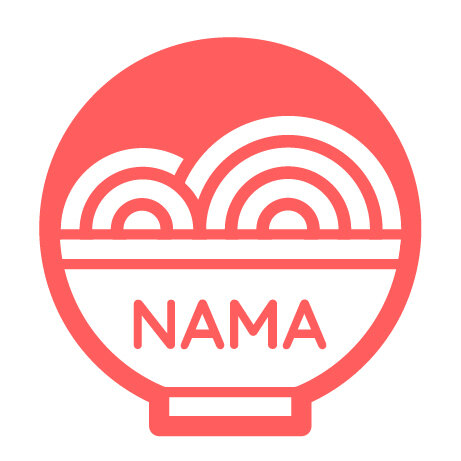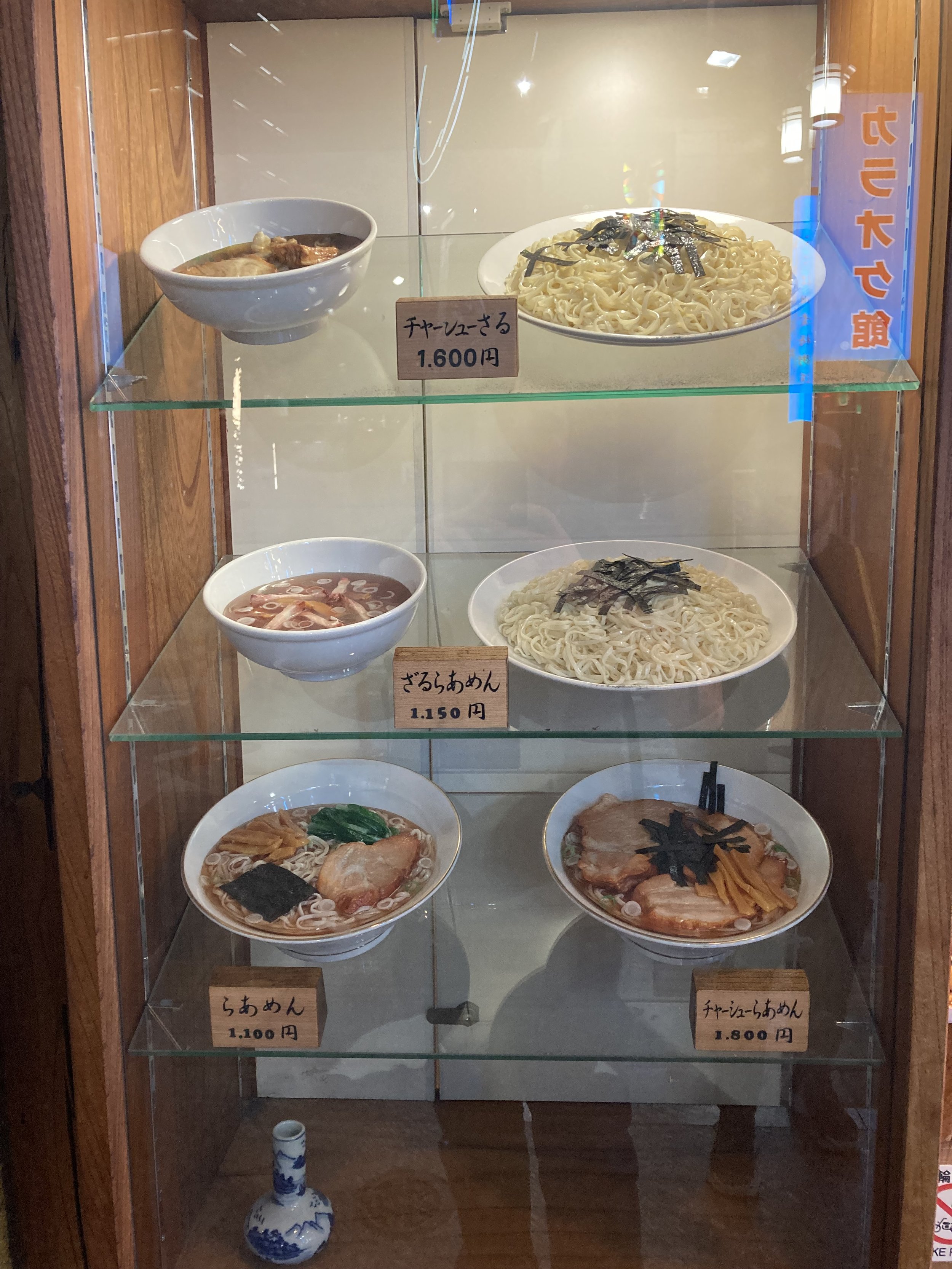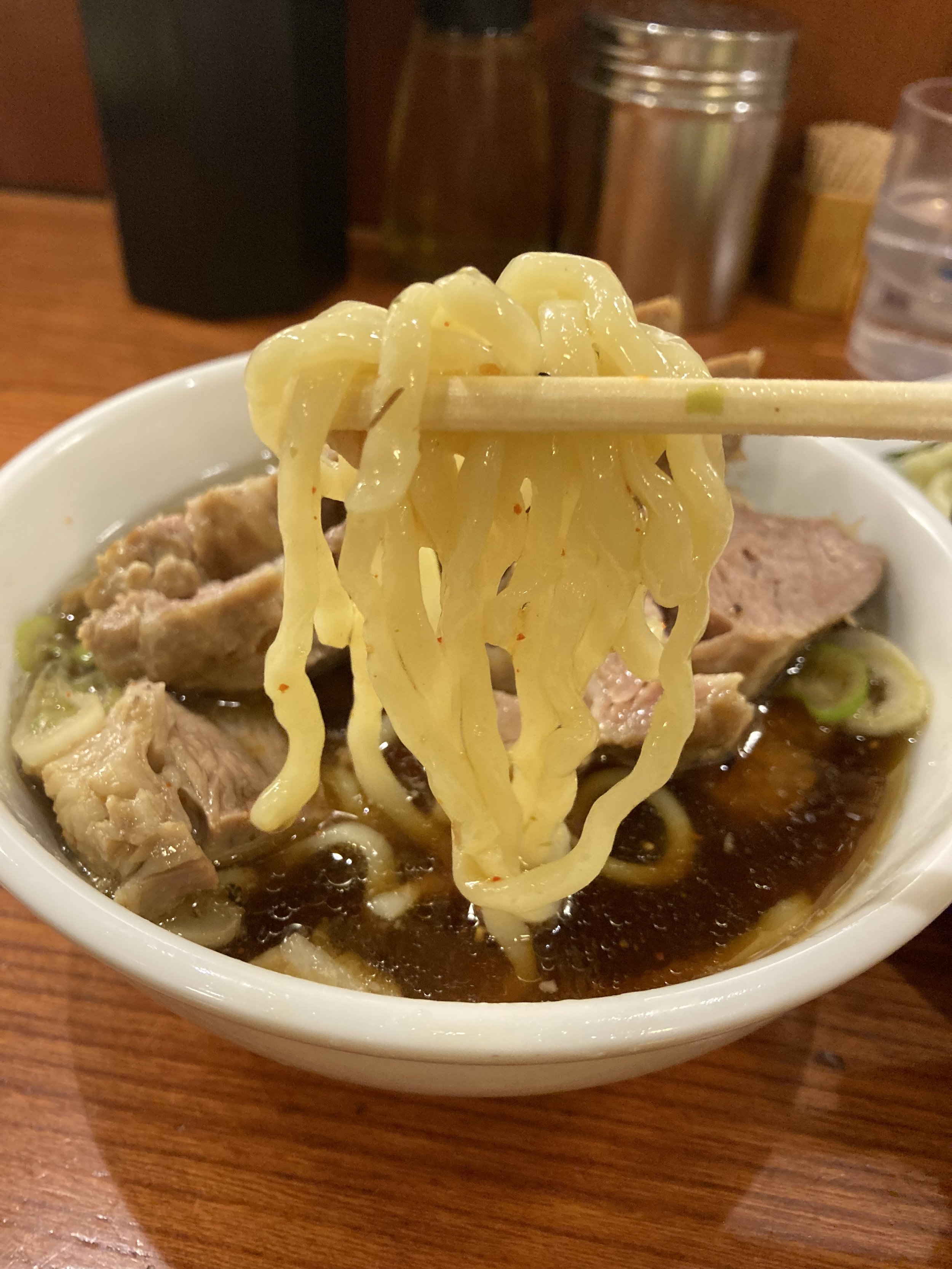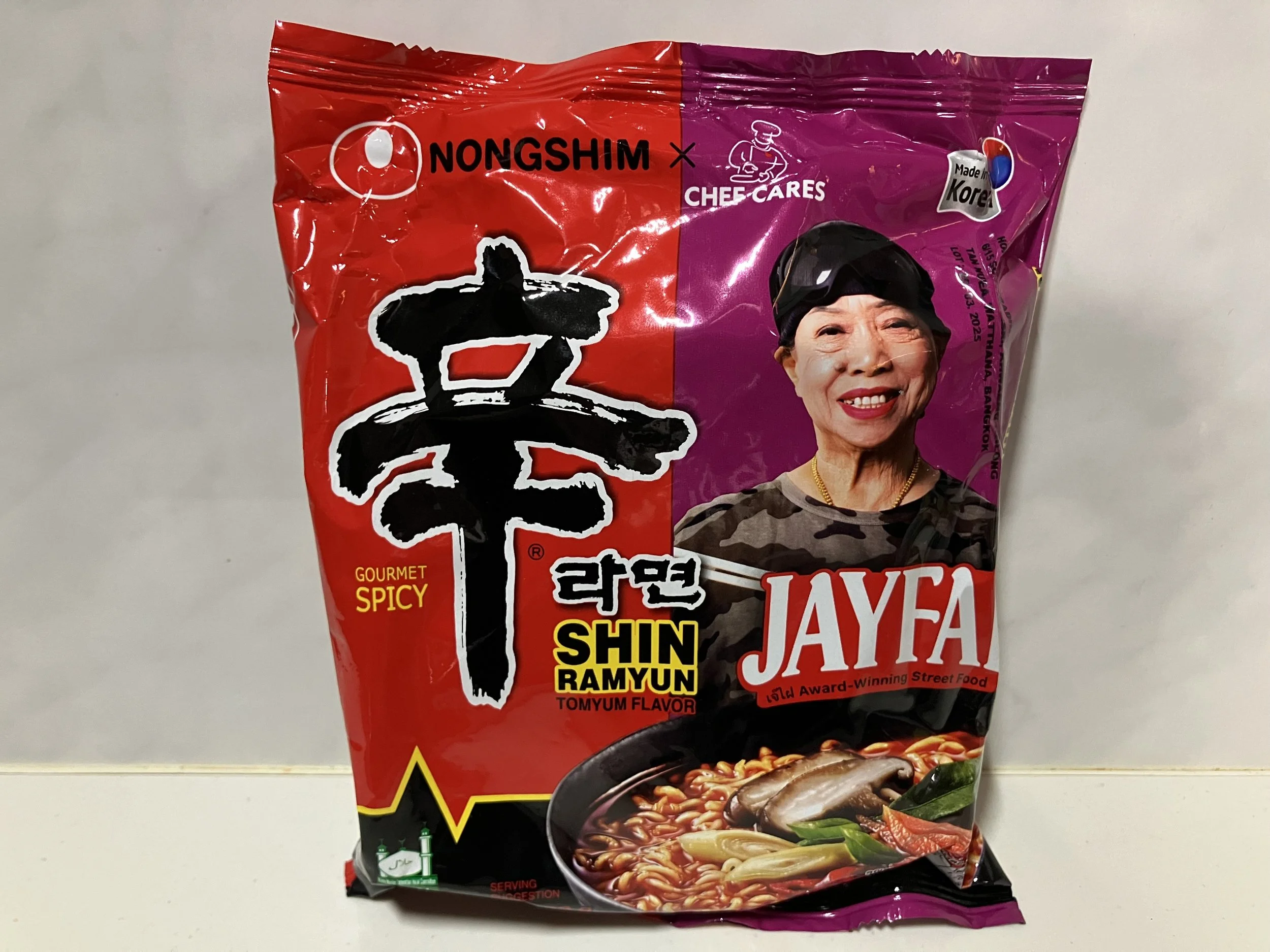Ramen Manrai / らぁめん 満来 - Shinjuku
Ramen Manrai in Shinjuku. Legend has it that the shop was originally owned by two brothers until they had a fight. Then one of the brothers opened his own ramen shop basically next door, called Ramen Horiuchi.
Entrance of Ramen Manrai in Shinjuku.
Both Manrai and Horiuchi essentially serve the same menu of ramen dishes. The tsukemen here is “kind of” like a Taishoken style tsukemen, but cranked up to Jiro levels in terms of punch, salinity and msg.
Shopping window with representations of the available dishes at Ramen Manrai. The natto zaru is missing though!
The main draw of Manrai is their tsukemen, which they call zaruramen or just zaru (ざる). They also offer regular ramen with soup, which I am for sure going to try one of these days. Another item which made them quite infamous in the past is their natto zaru, which means tsukemen with natto. The natto is whipped together with raw egg into the tsukemen soup, which gives it a very slimy texture. You better know if you like natto or not, before you order that dish. I am not the biggest natto fan, so you’ll have to excuse me for probably never providing a review of that particular ramen dish.
The full menu on the vending machine at Ramen Manrai. Not too many options.
Further options on the menu are the addition of chashu, menma, extra noodles and, oddly, a separate topping order of butter. Butter is the only topping you can add by itself to any dish. Strangely intriguing. I did go without butter for my first visit though.
Tsukemen with extra meat called “Chashu Zaru” at Ramen Manrai, the way to go for hungry people.
What you see above is the chashu zaru, which comes at a steep price of 1600 Yen. Well, at least in Japan that is considered quite expensive, although it is just around $10 USD with the current exchange rate.
The presentation is quite unique. The tsukemen soup bowl is overfilled with chashu that looks like it is not seasoned. And indeed, I would guess that logs of pork that are just stewed in the soup for a few hours and not seasoned at all!
Super tender, basically falling apart chashu. Also completely unseasoned, pure pork flavor!
Juicy, tender, but bland…if they weren’t swimming in the saltiest soup this side of the Sumida river. It just works. But by god, it’s so much chashu if you get the chashu version. Buyers beware. On top of being salty and punchy, the soup also has a good amount of sourness and spiciness from lots of ichimi chili powder. Furthermore, due to the chashu not being hot and the bowl not being warmed, the soup is lukewarm from the start. The soup itself is made with chicken and pork bones.
The tsukemen noodles at Ramen Manrai have a very unique shape and texture.
The noodles are made specifically for this ramen shop and have quite unique features. The texture is very springy, almost chewy, but definitely a pleasure to chomp on. There is also a good amount of kansui in the mix, which makes the noodles very slippery and slurpy. The noodles themselves seem to be handmassaged and almost twisted, which creates a lot of nooks and crannies to which the soup can cling to during the slurping process. This maximizes the soup amount that gets slurped up with every slurp.
Additionally, there is a handful of nori strips haphazardly sprinkled over the top of the noodles which add a bit of flavor and texture change with every other bite.
Freshly dipped noodles clearly show the bits of chili in the soup.
After dipping the noodles you can clearly see the chili flakes which stick directly to the noodles. As mentioned above, there is a good amount of chili in there which gives it a good kick in the background.
Gochisousamadeshita! Don’t forget to ask for soupwari at the end of your meal.
In the end, soupwari is offered by request, just ask the staff and they will fill your soup with some dashi to make it drinkable.
Ramen Manrai is a captivating experience due to its history and uniqueness. You can try a quite unchanged flavor that has been around for decades and still attracts a large number of patrons that swear on this being the pinnacle of tsukemen. Manrai is definitely a shop I would recommend for tsukemen lovers and general ramen nerds alike, since it pushes the boundaries in various directions with its unapologetic approach to ramen. Is Horiuchi down the road better? I don’t have the answer yet, but I will definitely go and make the comparison one day!
More information about Ramen Manrai / らぁめん 満来:
Here is Susuru eating the Natto Tsukemen and the Chashu Tsukemen at Manrai



















